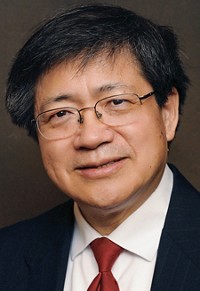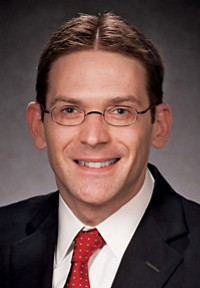Advertisement
Grab your lab coat. Let's get started
Welcome!
Welcome!
Create an account below to get 6 C&EN articles per month, receive newsletters and more - all free.
It seems this is your first time logging in online. Please enter the following information to continue.
As an ACS member you automatically get access to this site. All we need is few more details to create your reading experience.
Not you? Sign in with a different account.
Not you? Sign in with a different account.
ERROR 1
ERROR 1
ERROR 2
ERROR 2
ERROR 2
ERROR 2
ERROR 2
Password and Confirm password must match.
If you have an ACS member number, please enter it here so we can link this account to your membership. (optional)
ERROR 2
ACS values your privacy. By submitting your information, you are gaining access to C&EN and subscribing to our weekly newsletter. We use the information you provide to make your reading experience better, and we will never sell your data to third party members.
Environment
Instruments And Boston
by Rudy M. Baum, Editor-in-chief
August 13, 2007
| A version of this story appeared in
Volume 85, Issue 33
Chemists, especially organic chemists, often distinguish chemistry from other sciences on the basis of chemistry's molecular creativity. Chemists make molecules, they say. Unlike biologists and physicists, chemists manipulate matter to their own ends.
Quite true. Chemists, however, also measure matter, nowadays with staggering sensitivity. This, too, constitutes an essential component of chemistry's contribution to modern science and modern society. Knowing how much of a biologically active compound is present in a sample is essential in drug development or crafting relevant regulations of toxic substances. Over the past three decades, analytical instrument manufacturers have made incredible advances in creating an array of powerful devices for measuring matter.
This week's issue of C&EN contains a story by Senior Correspondent Marc Reisch on new applications of analytical instruments (see page 26). Terrorism; food contamination with bacteria, pesticides, and adulterants; air pollution; and aging materials in critical infrastructure are all applications demanding simple, rugged instruments that can be used by nonspecialists in the field.
"Scientific instrument makers are on a mission to take their instruments out of the lab and put them into everyone's hands," Reisch writes. "They want to make their mass spectrometers, infrared spectrophotometers, and ion detectors ubiquitous."
Reisch surveys a range of such instruments being used in arenas as diverse as the modern battlefield to detect chemical warfare agents, industrial settings for the analysis of key components such as refinery pipes and fittings, food-processing plants, and biodiesel plants. One instrument he describes allows farmers to estimate the ethanol yield in gallons per bushel for any commercial yellow corn.
Analytical instrumentation is a key component of C&EN's coverage of the chemical enterprise. We are reinforcing our commitment to this coverage by sponsoring the "Analytical Pavilion" during the ACS fall national meeting and exposition in Boston next week. The Analytical Pavilion will be held on Tuesday, Aug. 21, on the Boston Convention Center exhibition floor. It will focus on applications of analytical instruments in drug discovery. C&EN worked with the ACS Division of Analytical Chemistry in developing the pavilion.
The pavilion will feature two keynote addresses followed by a series of case-study presentations. The morning keynote address, titled "The Modern Pharmer: Analytical Technologies in Drug Discovery," will be presented by Adrienne A. Tymiak, who is executive director of bioanalytical and discovery analytical sciences at Bristol-Myers Squibb. It will be followed by case studies by Bruker, Shimadzu Scientific, and Applied Biosystems. The afternoon keynote, "Analytical Challenges in Drug Discovery," will be presented by Guy T. Carter, assistant vice president for chemical technologies and chemical and screening sciences at Wyeth Research. It will be followed by case studies by Bruker, Waters, and Dionex.
Speaking of the ACS meeting, this week's issue also contains an ACS Comment by ACS President Catherine T. Hunt on thematic programming at the meeting (see page 53). In Boston, the theme is "Biotechnology for Health & Wellness." Hunt points out that the opening presidential session on Sunday, Aug. 19, is "Material Innovations: From Nanotech to Biotech and Beyond!" The session features five world-renowned innovative leaders.
"It will take all of us working together to successfully execute meaningful thematic programming," Hunt writes. "Programming that will not only nucleate ideas, foster community, and accelerate innovation, but also effectively communicate chemistry to a broader audience."
Finally, this week's Employment Outlook feature by Associate Editor Linda Wang offers tips on navigating the ChemJobs Career Fair in Boston. This practical guide offers 10 concrete pieces of advice that will help any job seeker get the most out of this valuable career service offered by the ACS Department of Career Management & Development.
Thanks for reading.
Views expressed on this page are those of the author and not necessarily those of ACS.




Join the conversation
Contact the reporter
Submit a Letter to the Editor for publication
Engage with us on Twitter